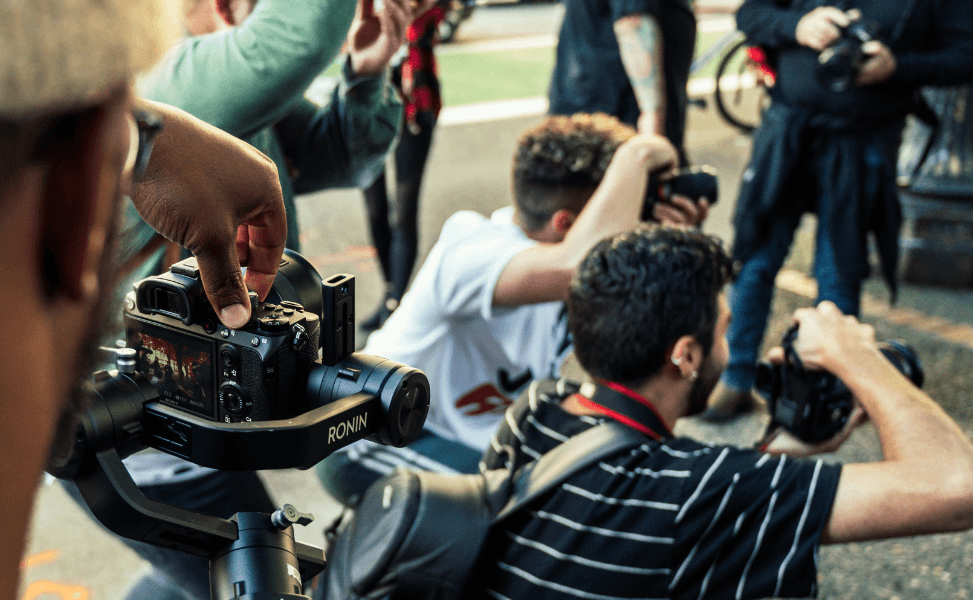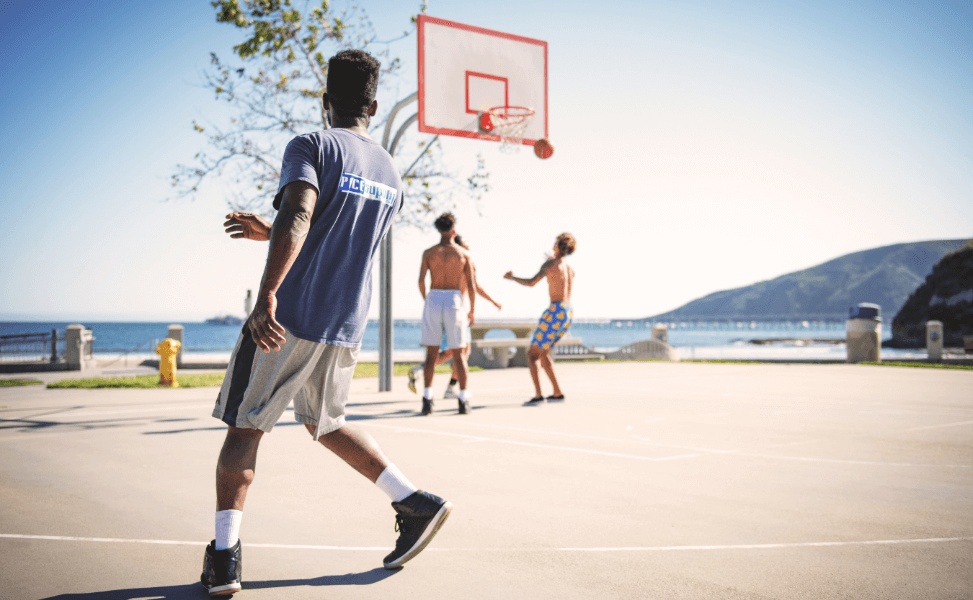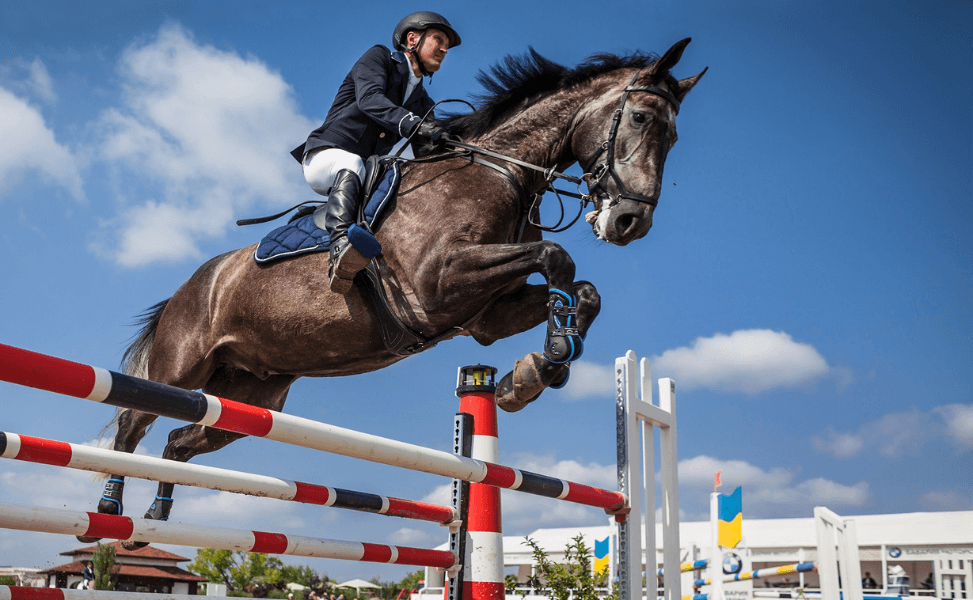
Sports photography is all about capturing fast-paced action across all sports. Think of everything from rugby to diving or even gymnastics. In many games, athletes more quickly and unexpectedly which can make it difficult to capture.
You must be ready for everything because a lot of sports photography locations, including arenas, ovals, or stadiums, might have inconsistent lighting. In order to capture the greatest viewpoints of any activity, regardless of the circumstances, Camera House has put up a guide to help you understand sports photography.
Check out our article Sports Photography Tips on the Camera House blog if you're interested in learning more about sports photography.

What is Sports Photography?
Photography of both professional and amateur sports is included in sports photography. These photos are frequently a type of photojournalism that can be fast-moving and challenging to take from a distance. Sports photography can capture anything from a match to practice or training.
Understanding the sport you are photographing will help you anticipate play and better capture the action. Knowing the rules will make it easier to take great shots that capture the emotion and spirit of the game.
What is essential equipment to take sports photos?
You can get the sharpest images by using a variety of key pieces of equipment for sports photography. Consider tripods, cameras, lenses, and more.
Lenses
Lenses are arguably the most essential piece of equipment to capture wonderful images of sports. The best lenses for sports photography have a maximum aperture of f/2.8 and are extremely quick and of good quality. You want a lens that has a large enough zoom to capture athletes far away, which is why telephoto lenses can be really helpful.
This allows you to capture the fast movements of athletes when they might be moving in an unexpected way. The Canon EF 70-200mm f/2.8L USM zoom lens is an excellent option if you’re serious about getting into sports photography.
Camera
A camera that has fast burst rates, quick autofocus, and powerful processing is necessary for sports photography in order to let you freeze the action. The Canon EOS-1D X Mark II is a great camera option to take sports photographs. For a more affordable option, check out the Nikon D500.
Monopod
A monopod is a great solution to gain stability while shooting. As a mount, a monopod acts as single-legged support to attach your camera to which prevents blurriness and unwanted movement. When athletes are moving quickly, it’s easier to prop the camera on a mount so you can easily track them through the viewfinder without moving the camera too much. The Manfrotto XPro Aluminium monopod is a great option to keep steady when shooting.
Check out our article Sports Photography Equipment Guide on the Camera House blog for the most comprehensive guide to sports photography equipment.

Camera Settings for Sports Photography
Sports photography is unique in how fast-paced you and your camera need to be able to react to moments in the play. As a result, you must have your camera set up correctly so you don’t have to spend time adjusting your camera settings while the athletes are competing.
Aperture
To have complete control over your aperture, it is advisable to take sports photography in aperture priority mode. Your subject will become more distinct the wider the aperture; most sports photographers like aperture settings between f/2.8 and f/3.5.
Shutter Speed
The key to successful sports photography is capturing fast-paced activity. You must use a quick shutter speed for this; sports photographers typically use 1/1000th to ensure they can get the image quickly.
Continuous Shooting
Further to the fast-paced activity of most sports, you want to make sure your camera can capture everything quickly. By using continuous shooting mode you can take a sequence of images in one hit to ensure you capture multiple great images.
ISO
Adjust the ISO settings depending on the lighting of the sporting event. For games played at night, you might need to increase the ISO to achieve a crisp image.
Flash
It's common etiquette for most sports that photographers don’t use flash during the game. This is because it can be distracting for the athletes and take their minds off the game.

Post-Processing Sports Photography
After you’ve taken your images of any sport, the editing process can help make the most out of any image you’ve taken.
Adobe Suites
Adobe Creative Cloud Photography Plan, with Photoshop & Lightroom, are the tools used by all photography professionals. Both tools by Adobe focus more on manipulating, editing and organising images. It is incredibly well-liked by graphic designers, animators, publishers, and a variety of other artists since it provides extensive editing capabilities using numerous layers and masks.
GIMP
For those on a budget or just starting out, GIMP, is an online free photo editing software. While its features may not be as extensive as Adobe programs, there are still a lot of things you can do with GIMP from cropping, adjusting lighting, blurring images and more.
DxO PhotoLab
DxO PhotoLab may have the finest noise reduction and auto-correction capabilities. You can anticipate improved de-noising, exact optical adjustments, and precise brightness and contrast adjustments. DxO PhotoLab is available on both Windows and Mac computers.
Check out our article The Best Photo Editing Software for Your Needs on the Camera House blog for a guide to editing sports photography.
Visit Camera House to Find the Equipment For Sports Photography
Take advantage of Camera House’s knowledgeable staff in-store and online and ask them which camera is right for you! Check out our shipping information online and enjoy flat-rate delivery Australia-wide, or check out our store locator to visit a Camera House store near you.
